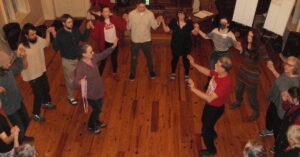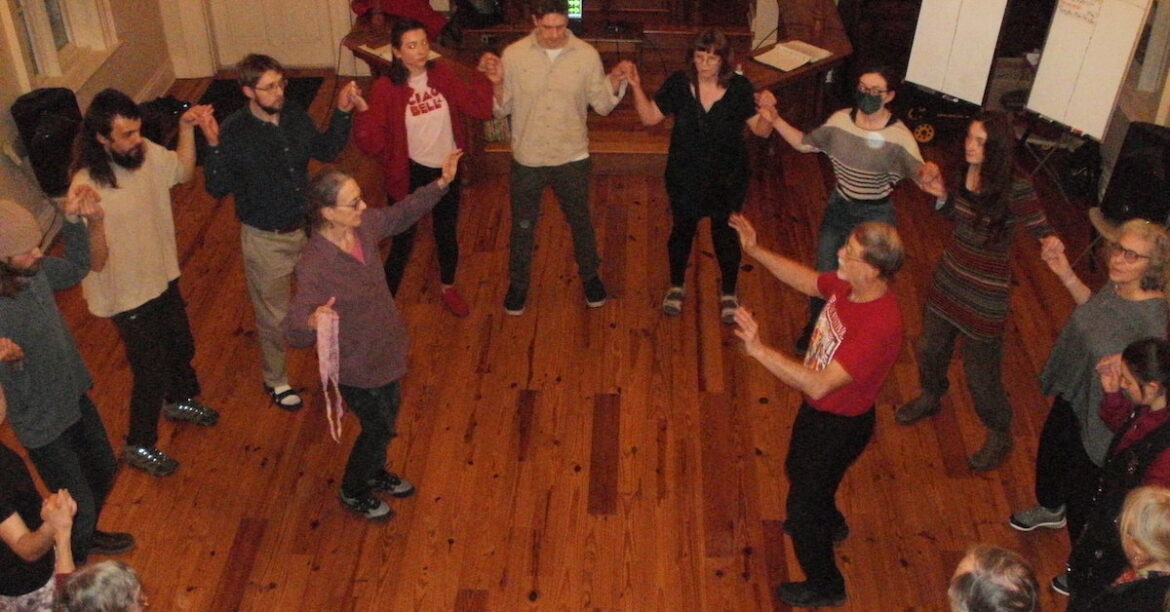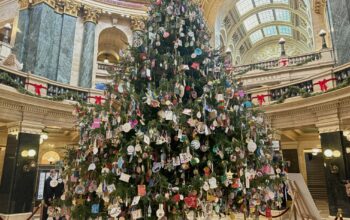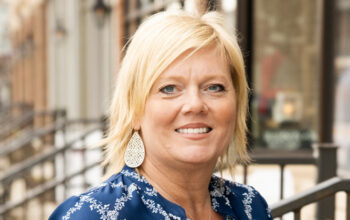In fall of 1963, Michael Kuharski, a freshman at UW–Madison, walked down Library Mall, exploring the student organizations and clubs his new school had to offer.
Amid the start-of-semester chaos and copious club choices, Kuharsi was drawn to a group of folk dancers performing around the campus quad’s signature fountain.
This wasn’t Kuharski’s first exposure to folk dance; at his Catholic high school in Monona, he had enjoyed learning some square, social and evening dances. Kuharski immediately fell in love with dancing — he even borrowed library books to learn more routines on his own. Despite this interest, Kuharski’s commitment to folk dance fizzled as he realized learning dance moves from a book was, unsurprisingly, not very fun.
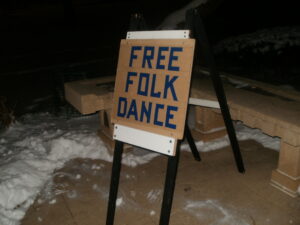
So, when the opportunity arose during his first semester on campus, Kuharski decided to give folk dance a more serious try.
He hasn’t stopped dancing since.
Now, at age 73, Kuharski spends his Thursday evenings imparting his folk dance wisdom to beginners at Madison Folk Dance Unlimited.
The group was born in the late 1960s when two separate dance groups, Madison Folk Dance and Folk Dance Unlimited, were both struggling to draw attention and combined in an effort to maximize potential — the cause of its “clunky, clunky moniker,” according to Kuharski.
The group meets from 6 to 10 p.m. at the historic Gates of Heaven Synagogue, in James Madison Park — which, in addition to being the fourth oldest surviving synagogue in the nation, contains what Kuharski calls the “Stradivarius of dance floors.”
At the group’s Feb. 13 meeting, dancers combated the snowy darkness outdoors with lively dance and discussion. Kuharski, in his bright red button-down shirt and wire-framed glasses, began dancing shortly after 6 p.m., delayed by five minutes as Kuharski would not begin until he had introduced himself to each dancer and learned their names. Dancers soon joined in, abandoning the folding chairs along the room’s perimeter, leaving behind their winter jackets and outdoor shoes.
Once everyone made it onto the dance floor, Kuharski stopped the music and started formally teaching the first routine of the night, a Bulgarian dance that had the 12 participants — widely ranging in age and experience — holding hands in an open-ended circle.
“I’m watching several of you grow as dancers right before my eyes, and let me tell you, it’s deeply satisfying,” Kurharski told participants.
After he’d taught the dance in its entirety, the music started once more, and with the help of Kuharski’s chanting, counting and continued instruction, the dancers performed the freshly learned routine.
The first hour of the group’s meetings is always aimed at beginners, explained 81-year-old Steve Salemson, who, with over 50 years of folk dance experience, is definitely not a beginner.
“For people who are new, it’s very helpful,” Salemson said. “It encourages them to come back because they can master it and feel a sense of accomplishment.”
Advanced dancers, like Salemson and his wife, Joan Wallace — who lived a real life folk dance fairytale, meeting at a weekend-long folk dance camp in Beloit about 10 years ago — come to the last two to three hours of the meetings, where different instructors weave in and out to lead more complex requests and fan favorites.
One of the interchanging instructors was Sarah Bennett, a 41-year-old who joined the group in 2006 after graduating from Beloit College with degrees in Russian language and literature and Russian studies. Bennett was drawn to Madison Folk Dance Unlimited for its international nature, athletic element and the silliness of its community.
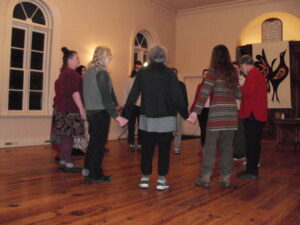
Wearing small oval glasses, with her blonde hair held back in a claw clip, Bennett stepped into the circle to teach an Albanian dance. By 7:30, the group had doubled in size, and about half of the dancers appeared to be under 40, which Bennet called a “bright future,” and credited to a reinvigorated interest in group dance post-pandemic.
Wallace, too, has noticed the increase in younger people trying folk dance and is excited about what that means for the future of Madison Folk Dance Unlimited.
“This group, I’m glad to say, has seemingly had a resurgence lately,” Wallace said. “A few years ago it wasn’t like that, so we’re very glad about that, and there seems to be hope that it might continue.”
Dances regularly performed by the group originate from a range of nations, includingAlbania and Bulgaria, among other Balkan countries. The term “folk dance” encapsulates a wide range of social dances created by international communities, but beyond that, it can be difficult to define.
According to Bennett, folk dance is a dance form devoid of any institution or professional performers attached to it. She also noted that folk dance is accessible, community-based and generally done with the simple intention of having fun.
Wallace’s definition also included an emphasis on fun, along with an aversion to any purist or exclusionary ideas.
“I put a great deal of stock in fun and in enjoying the music and the dance,” Wallace said. “The movement is international folk dance, so in theory, it can involve anything.”
Kurhaski came up with one definite way to tell whether or not something is folk dance
“The idea of folk dance is that it comes from the folk,” Kuharski said. “There’s a way you can tell if it’s a folk dance: try to change it and watch it fight back — because it doesn’t, it isn’t your place, it isn’t any one person’s place.”
However you define it, Kuharski encourages anyone to come to a Thursday night gathering to give folk dance a try — just like he did on that fall day in 1963 — because now, more than ever, our community needs unity.
“I think our culture is ready for people to be in the community right now. People need to be reassured that we can be humans together,” Kuharski said.
